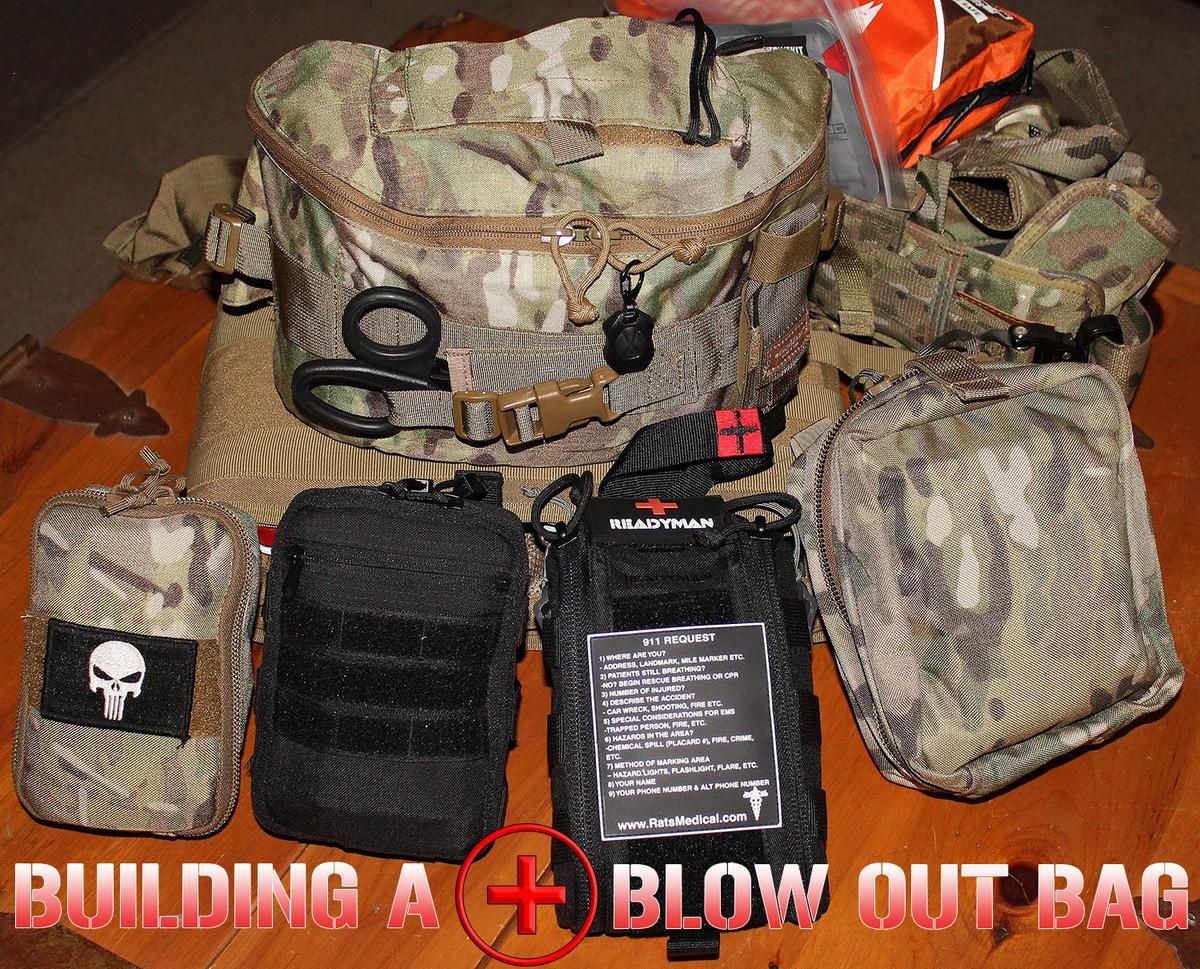
This medical kit article (Blow Out Kits, IFAK) is intended to provide ARbuildjunkie readers with helpful information and should be used for informational purposes only. This article should not be used as an instruction manual for emergency patient treatment. The opinions expressed by any of the writers and/or any sources are their own. We accept no responsibility for any actions by any reader or group. By reading this, you agree that any use of or reading of any of the information provided herein is at your own risk. If you or someone you are with is injured, seek immediate medical attention.
Having a medical kit for trips to the range is a must for me. Going out for a day of shooting at the range can be fun, but it can also be dangerous. Many accidents can happen when you’re shooting outdoors, so it’s best to be prepared for them by having certain medical gear in a medical kit close by.
What you carry in your medical kit or on your person will differ from shooter to shooter. Some of these items are going to be skill-level dependent (Meaning you need to get training to use them correctly), and some of them can be used by anyone. Just keep in mind if you don’t know how to use a specific type of gear then you shouldn’t carry it with you. Even though there are some things that you shouldn’t have in your kit, there are some things that are universal when it comes to medical gear.
Quikclot Combat Gauze
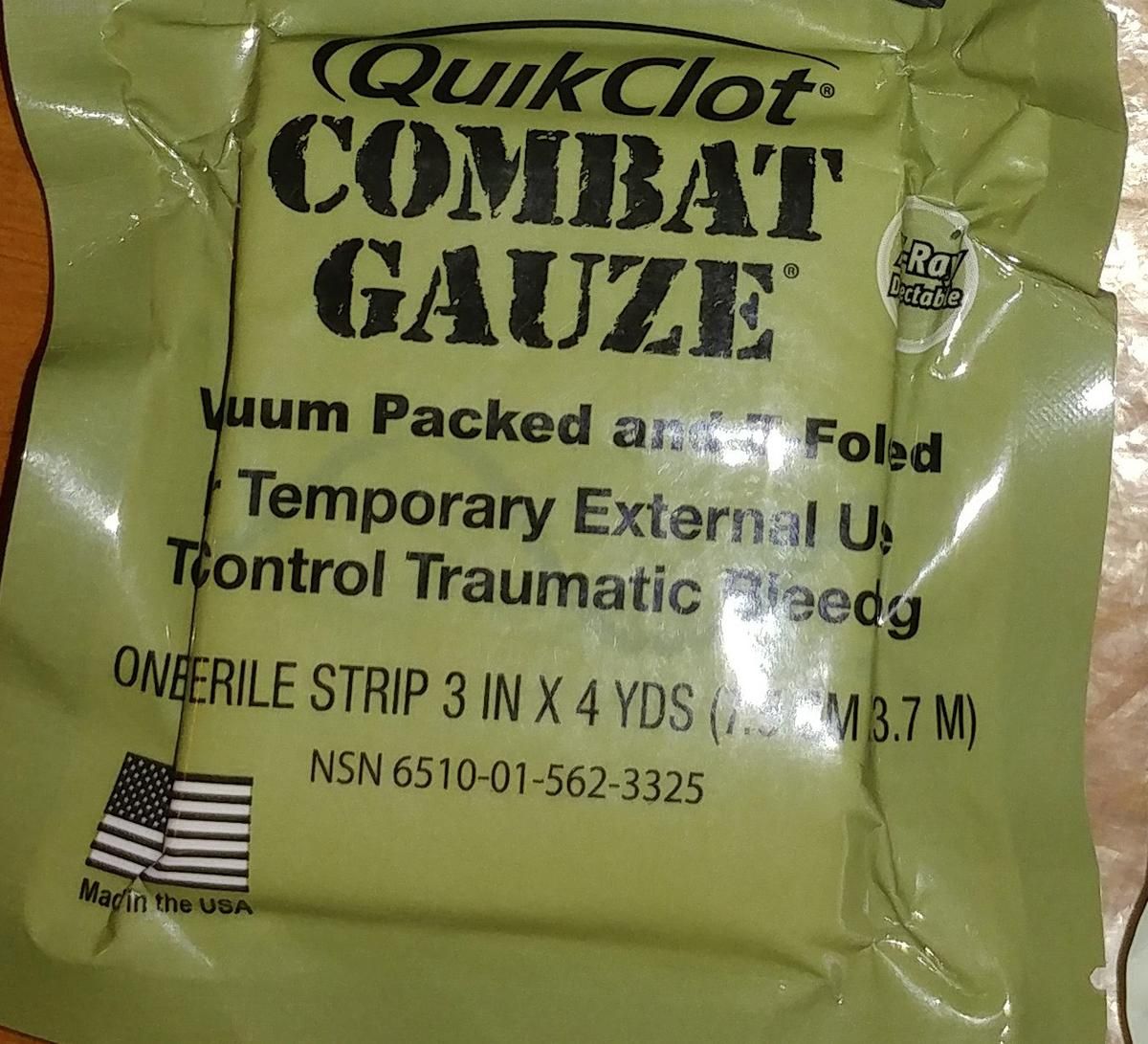
One piece of equipment that every shooter should have in
Olaes Modular Bandage
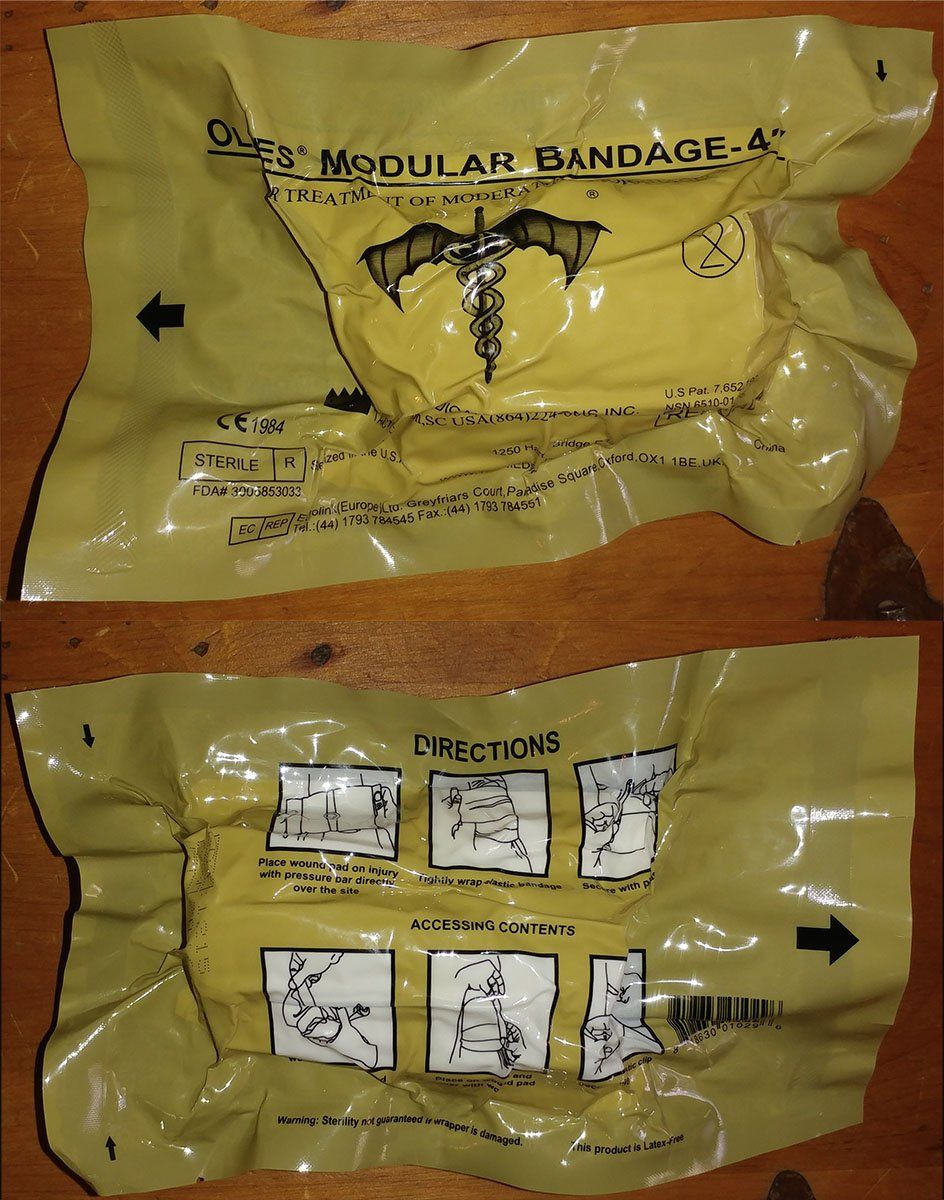
Besides Clotting Agents and Tourniquets, there are certain bandages and gauze that can control bleeding too. One prime example is the Olaes Modular Bandage. It uses an adjustable “pressure cup” to compress the blood vessels in and around the wound, stopping the bleeding through focused pressure application. The bandage has other great features too, like the 3 meters of sterile 4-ply gauze packed inside of it. There are a few different versions of the Olaes Bandage, 4” Inch, 6” Inch, and a Flat Packed 4” Inch model.
You can also use simple Z-fold gauze to pack the wound. Deploying Z-PAK Gauze is extremely similar to using Quikclot Z-Fold gauze. When there’s a wound that needs packing, you unwrap the gauze and you begin to push the gauze into the wound using your fingers or your thumbs. The person with the wound is not going to be very happy with you, but you need to pack that wound with the gauze until it stops hemorrhaging.
Chest Seal
Another item that you’ll want to have with you in your medical kit or blowout bag, if possible, is a chest seal. One of the better chest seals is the HyFin chest seal. It comes in a 2-pack, one for the front of the wound and one for the back. The Hyfin has a Patented 3-channel vent to relieve pressure on the wound. Another great feature is that it comes in sterile packaging with easy-to-read instructions on the rear.
Another good chest seal option is the Fox chest seal. Just like the Hyfin chest seal, the Fox chest seal comes with detailed instructions on the packaging to apply the device. They don’t cost all that much, and they work very well.
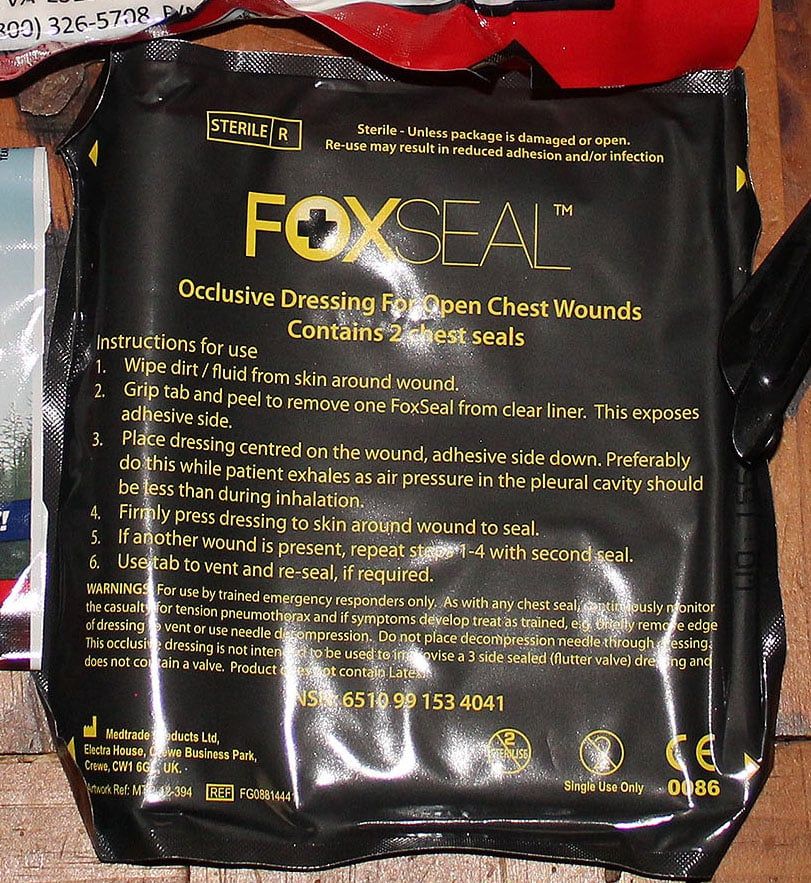
Tourniquets for your Medical Kit
There are quite a few different tourniquets on the market that are decent, but some are a notch above in terms of quality and ease of use. If given a choice for my medical kit, I would go with either a CAT tourniquet, SOF-T, or a SWAT-T
SOF-T Tourniquet
The SOF-T tourniquet has some specific advantages in its design. It is preferred by many in the EMS because of its robust construction and simple use. The SOF-TT-W tourniquet has a 1.5” inch wide nylon band with a generous amount of strap, so gripping the tourniquet and pulling down tight is easy. The wider band is less painful for the patient, and it also tightens down on a larger portion of the blood vessels. Compressing a larger area makes stopping the blood flow to the wound easier.
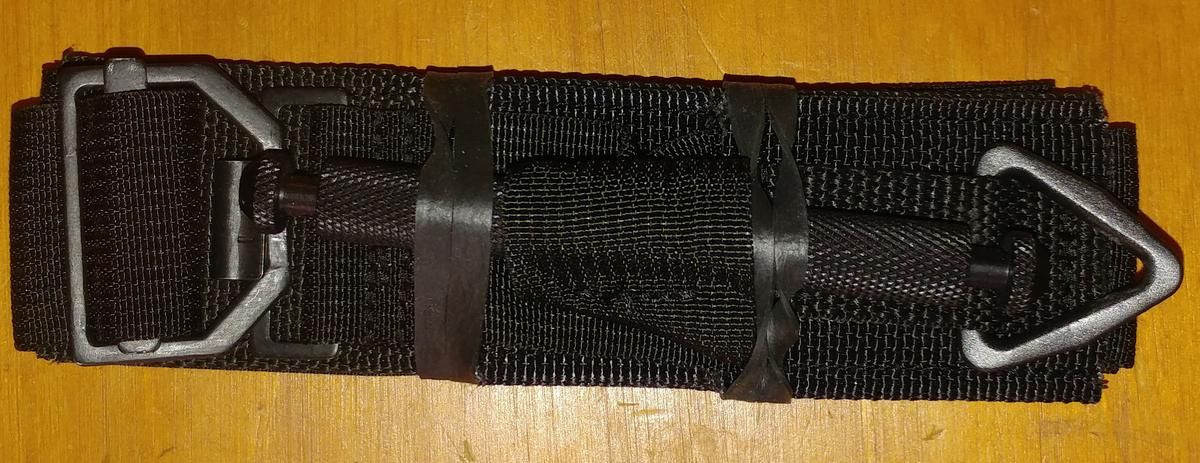
The SOF-T tourniquet line has the heavy-duty aluminum handle or “windlass” bar and the snap-lock buckles that are designed for rapid use in the field. If you have to use a SOF-T, you will need to apply it by deploying it and sliding the loop portion over the extremity. Then you will pull on the long portion of the strap and that will tighten down the strap. Next, twist the windlass bar down a few times to stop the blood flow, and snap one of the triangular rings or “tri-rings” over the inset portion on the windlass to keep the windlass in place.
Once that part is done, be sure you tighten down the safety screw, so the SOF-T doesn’t loosen up on your when on the move. Be aware that you can also pull the long portion of the strap out of the buckle and thread it around a different extremity or a different area that may be difficult to get to. Once you have the long portion of the band around the bleeding limb, just feed the strap back thru the buckle and apply the tourniquet as previously described.
CAT Tourniquet
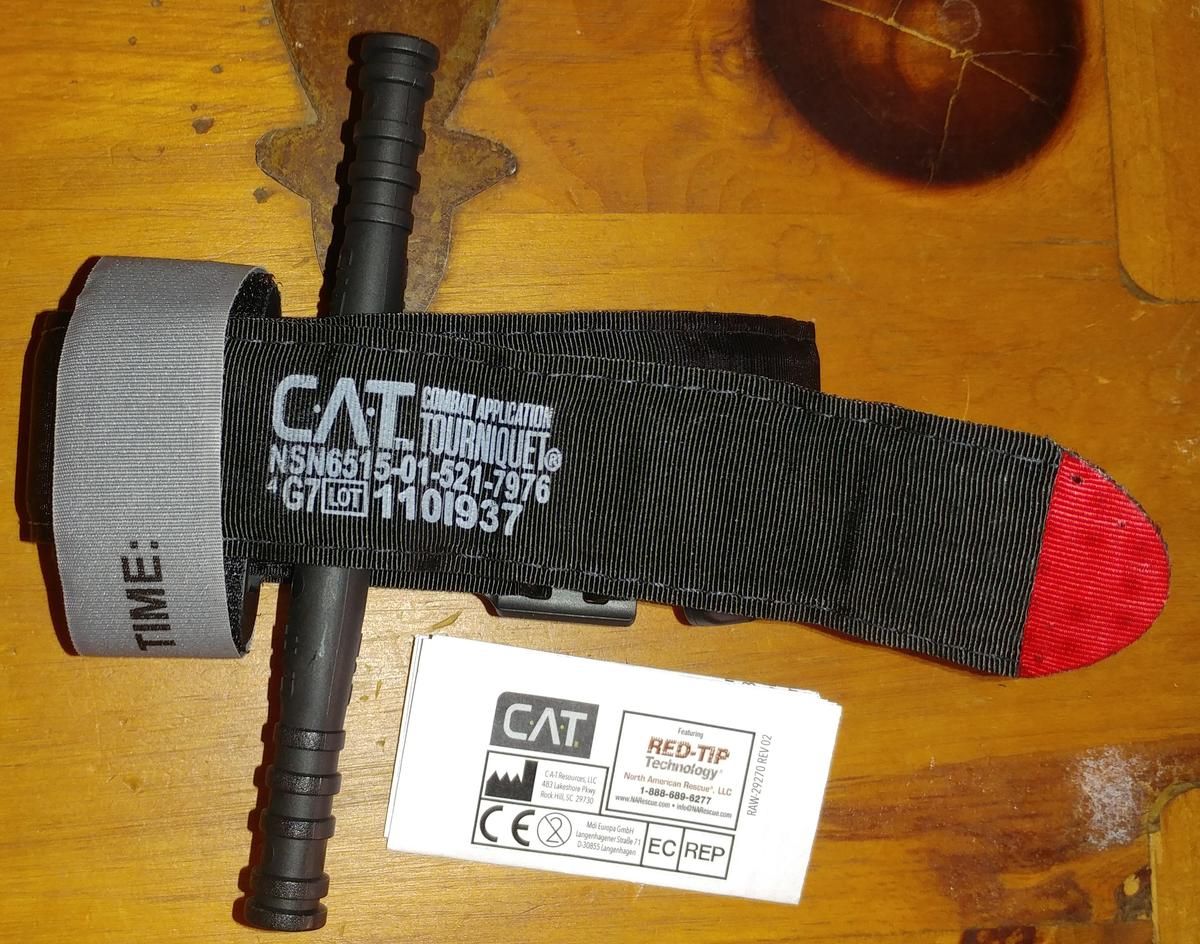
The CAT Tourniquet is a lot like the SOF-T tourniquet in that it uses a windlass bar to stop the bleeding. The windlass bar isn’t as big, and it’s made of polymer but its pretty tough. I like the CAT because it’s a lot more lightweight than most tourniquets and it is easy to use in an emergency. The CAT can be applied fast, and with just one hand.
Place the CAT above the wound, preferably about 2-4” inches above the injury. If you don’t have a measuring tape handy, just use the three joints of your index finger. Each joint is roughly an inch long, which should give you an accurate way to measure the distance on the fly.
Put the injured area through the loop or feed the end of the tape through the buckle, tighten it down, and then attach the first part of the strap onto the Velcro area before the windlass clip (C-Clip). Then, twist the windlass bar three times or less, but not any more than three.
Then, slip the bar under the windlass clip, or “C-Clip” to hold it in place. The rest of the Velcro strap can be fed under the windlass clip and around itself.
And finally, you can wrap the windlass clip strap around the clip, securing the tourniquet in place.
SWAT-T Tournaquet
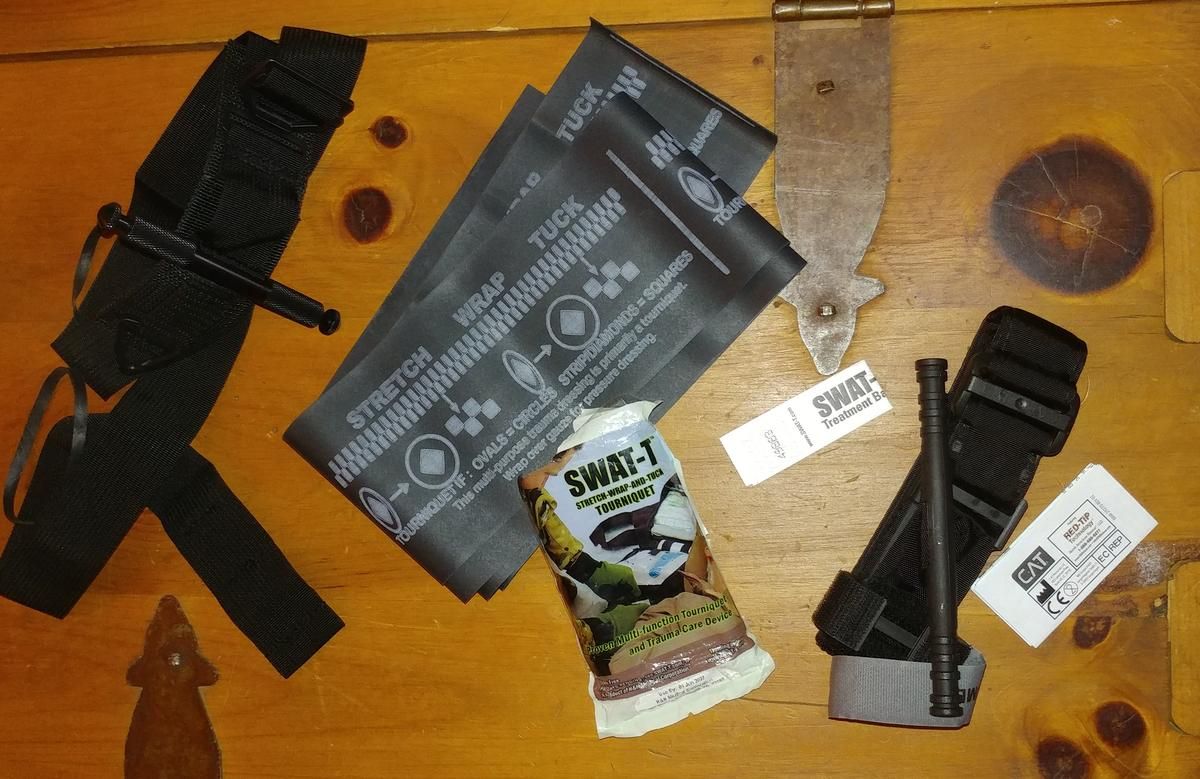
The SWAT-T or “Stretch Wrap And Tuck – Tourniquet” is one of the most simple models on the market, but it is one of the most effective, as well as one of the easiest ones to use. I would highly recommend one of these somewhere in a medical kit I was building.
It has instructions printed on the back of the packaging it comes in, and it has instructions printed right on the tourniquet. This is literally one of the easiest ones to use.
You simply tuck one end under the arm or leg to allow it to stretch, stretch the SWAT-T out and wrap it around the wounded area tightly.
Tuck the end of the SWAT-T into the end under the wrap and it should hold itself in place. Printed in the SWAT-T are instructions and symbols to prevent injury.
You will see what looks like an oval with a thin diamond in it. When stretching the SWAT-T, you only stretch it until the oval becomes a circle. There are also rectangles printed on the SWAT-T, you only stretch it until those rectangles become squares.
Battlefield reports are telling us that most tourniquets are safe to use for up to two hours. The “Golden Hour” rule of medicine says help should have arrived by then or the patient should be transported to a higher level of care before that two
Medical Kit Pouches
Also, be sure you have something to carry it in. You can choose one of the many “Med Kit” or “IFAK” (Individual First Aid Kit) pouches or bags made by HSGI and many others. One of the best ones on the market is the HSGI Bleeder Blowout Pouch.
Another great medical kit, IFAK or Blow Out Bag option is the NAR Ankle Trauma Holster. These are great cause they have 3 pockets that can hold a tourniquet, Quikclot gauze, Z-fold gauze, and gloves. The NAR Ankle Trauma Holster can hold it all covertly, under your pants.
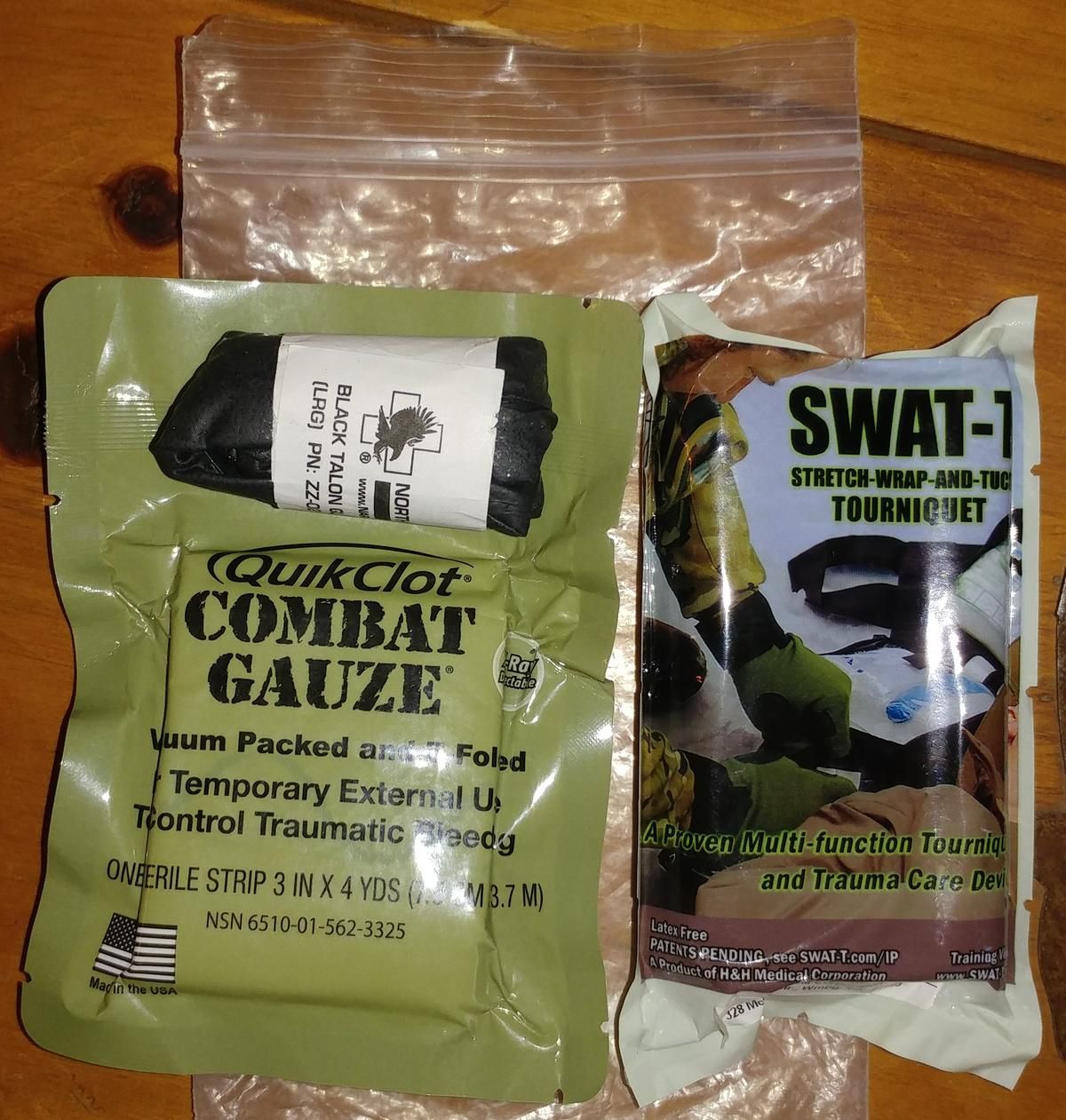
Finally, the most simple and easiest way to carry a basic Blow Out Bag is to carry one SWAT-T, one QuikClot Combat Gauze, and one pair of nitrile gloves in a small Ziplock bag in one of your pockets. You can add in a few band-aids and maybe some other small items, but really, those few items should get you by for most emergencies. Good luck out there, practice with your gear, and remember to use your head when you are in an emergency.
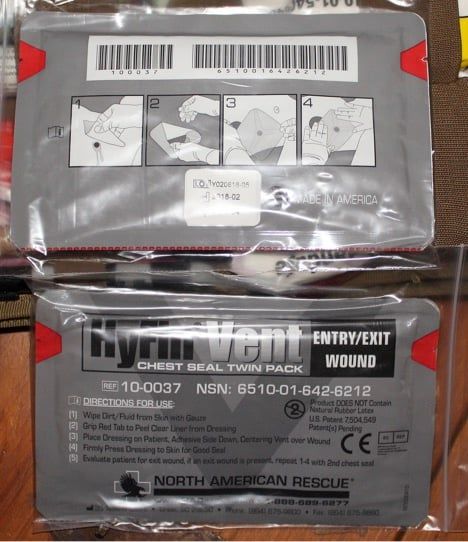
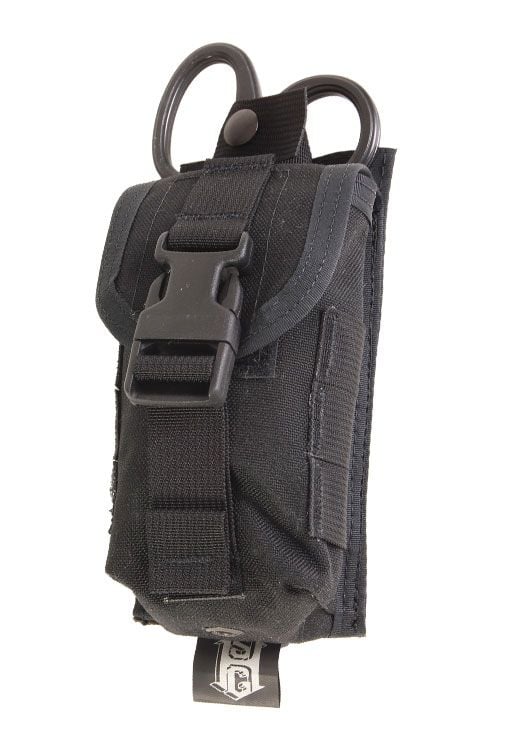



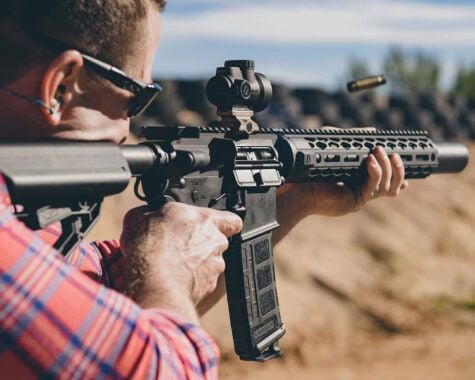
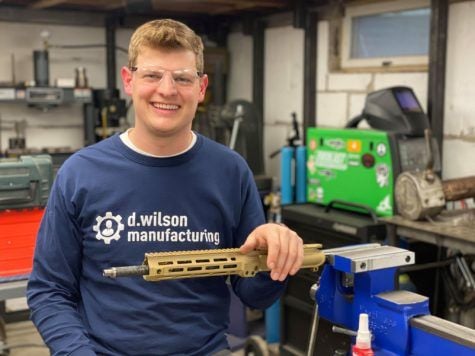

I like the RATS tourniquet. It’s compact and pretty easy to put on yourself.